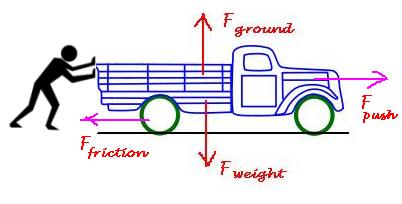
- #FORCE PHYSICS SCIENCE QUESTIONS WITH PICTURES PDF#
- #FORCE PHYSICS SCIENCE QUESTIONS WITH PICTURES MANUAL#
- #FORCE PHYSICS SCIENCE QUESTIONS WITH PICTURES SOFTWARE#
- #FORCE PHYSICS SCIENCE QUESTIONS WITH PICTURES SERIES#
Some students think such a force keeps objects moving and that objects slow down and stop because this force is gradually used up. A moving object is thought to ‘contain’ or ‘have’ force. There is a view widely held by students of a force as having some material existence and being somehow embedded in moving things. These common meanings substantially shape the understandings that students develop of the word ‘force’.

The word ‘force’ has many meanings in the everyday lives of students.
#FORCE PHYSICS SCIENCE QUESTIONS WITH PICTURES SOFTWARE#
WinFIG (Cross-platform): Although commercial, its quite popular in the scientific community.ĮDIT: Wikipedia has a nice page which discusses various software that can be used to create figures.
#FORCE PHYSICS SCIENCE QUESTIONS WITH PICTURES PDF#
Can process LaTeX source code and import PDF figures. Also Ipe was designed for scientific drawing. Ipe (Cross-platform): Ipe is something in between Inkscape and Dia. Still you'll find a LaTeX plugin, export to LaTeX/PSTricks etc.ĭia (Cross-platform): Very simple and easy, but not very powerful. Note that Inkscape was not meant for making scientific diagram. Inkscape (Cross-platform): Although the learning curve is a bit steep, its worth it. Wikipedia has a nice list of vector graphics software. For this purpose always use vector graphics. This has serious disadvantages when you want to make screen readable documents (the picture pixelizes). GoodiesĬredit for this amazing picture goes to Johan Kåhrström (go also see more stuff under illustrations there).įirst of all do not use a raster graphics software like Gimp to draw pictures. For a one night's work and my first time with MP I was more than satisfied. So I put together simple MP program that has converted my input data (vertices and edges of the polygons as just numbers) into beautiful images.
#FORCE PHYSICS SCIENCE QUESTIONS WITH PICTURES MANUAL#
True, it would probably be quicker in the end, but I hate manual work I rather spend much longer learning some programming language and then just code all the work in few minutes. There was a huge number of those polygons to draw, so I quickly abandoned all hope of trying to draw them by hand in Inkscape or something similar. I used MP to create some polygons on a hexagonal lattice in the context of cluster expansions. You can draw two curves $X(t)$ and $Y(t)$ (defined most comfortably as splines) and tell MP to compute their intersection, draw a point there and label it with some text

it's vectorial (this should probably go without saying but still).

It's on par with TeX in being a little hard to learn but once you do master the basics you won't believe you could have ever used anything else (in particular, GIMP and Inkscape good analogy here would be to TeX vs. I'll interpret your term diagram as "any fancy image that captures some physics".įor this I can hardly recommend anything else then MetaPost. Please recommend few pieces of softwares if they are good for different situations.

#FORCE PHYSICS SCIENCE QUESTIONS WITH PICTURES SERIES#
the ability to run through a loop that draws a series of lines with a varying parameter). Moreover, minimal programming functionality would be nice additional feature (i.e. While I would like to hand-draw and drag-and-drop pre-made shapes, I also want to specify the exact locations of curves and shapes with equations when I need better precision. I am looking for a tool with high flexibility and minimal learning curve/development time. So, which tools are commonly used by physicists? What are their good and bad points (features, ease of use, portability, etc.)? The only other tools I know are Microsoft Paint and the tools built into Microsoft Office. I know some people use LaTeX, but I am not quite sure how versatile or easy it is. I usually hand-draw things in GIMP which is powerful in some regards, but it is time consuming to do things like draw circles or arrows because I make them from more primitive tools. Undoubtedly, people use a variety of programs to draw diagrams for physics, but I am not familiar with many of them. It is not currently accepting new answers or interactions. This question and its answers are locked because the question is off-topic but has historical significance.


 0 kommentar(er)
0 kommentar(er)
